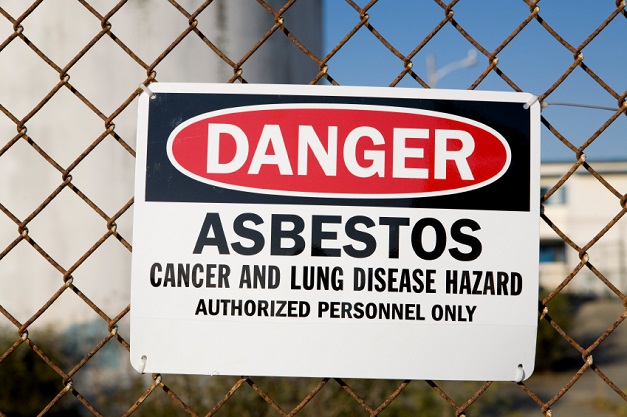What are the health risks from asbestos?
28th June 2017This month, Asbestos Waste Solutions is giving a detailed explanation of serious health conditions caused by asbestos exposure. Thousands of people across the world are affected by asbestos-related diseases and it’s the mission of the asbestos disposal industry to see this number decrease by removing and destroying asbestos in a safe, controlled way. Here are the many conditions that should convince you to never remove asbestos yourself; always use a professional.

Asbestosis
Doctors diagnose asbestosis using chest x-rays that show dark spots in the film where the x-rays can’t penetrate the lung tissue. This is a sign of the chronic lung disease asbestosis, in which scar tissue (pulmonary fibrosis) has formed in the lining of the lungs.
The fibrosis makes breathing difficult by decreasing the elasticity of the lungs, and shortness of breath is the most common symptom. Doctors also check for ‘rales’ using a stethoscope, which is a crackling sound heard at the end of the patient’s inhale.
Further symptoms include coughs, chest pains, reduced lung function, finger clubbing and bluish skin colouration.
Asbestosis takes several years of asbestos exposure to develop and the progression of the disease varies from person to person. Many cases do not worsen after diagnosis. However, the disease may continue to advance in some individuals.
Lung Cancer
Asbestos is classified as a known human carcinogen (a cause of cancer) throughout the developed world, not least because of its links to lung cancer. Though the latency period of lung cancer development is typically 20 to 30 years after exposure, it was the number one contributor to occupational ill health in the years 1950 – 2000.
Lung cancer does not often show symptoms in the early stages, and by the time symptoms do occur the disease is in its advanced stages.
Symptoms include chronic coughing, weight loss, shortness of breath, fever and chest pains. However, these are common in a majority of lung disorders, so asbestos-related lung cancer can only be diagnosed by a doctor using chest x-rays and laboratory tests.
Mesothelioma
Mesotheliomas are almost exclusively associated with asbestos exposure and are rare in the general population. This form of cancer arises from mutations in cells lining the lungs, abdomen and heart – the pleural, peritoneal and pericardial cavities, respectively.
Malignant forms of this cancer are fatal in most cases because mesothelioma causes multiple tumors that are often inoperable.
For workers suffering heavy exposure, mesothelioma is likely caused by the swallowing of asbestos fibres that have been cleared from the airways by the lungs in the form of mucous. This is how the disease is able to spread to the abdomen (peritoneum).
Pleural Effects
Non-cancerous abnormalities in the lungs caused by inhalation of asbestos fibres include:
- Deposits of collagen, known as pleural plaques
- Diffuse thickening of the pleura
- Folded lung, where a portion of the lung becomes airless
- Fluid in the pleural cavity
These abnormalities affect 10-60% of asbestos workers and are commonly found in family members who have been exposed to asbestos through fibres carried home on clothing.
The latency period of pleural effects is 10 to 30 years and these are often treatable.
Immune System Effects
Several studies point to ill health caused by asbestos exposure and its links to a reduction in immune system function. It has not been determined whether a depressed immune system is a cause or result of asbestos-related diseases.
Asbestos Waste Solutions have over 20 years of experience in the supply and delivery of asbestos safety equipment. We provide a professional, meticulous service to commercial, industrial and domestic clients who deliver asbestos to our transfer station to ensure efficient asbestos disposal across the UK. To find out more about our services, don’t hesitate to contact us today.
This entry was posted in Asbestos Disposal, Asbestos Removal. Bookmark the permalink.

 Follow
Follow